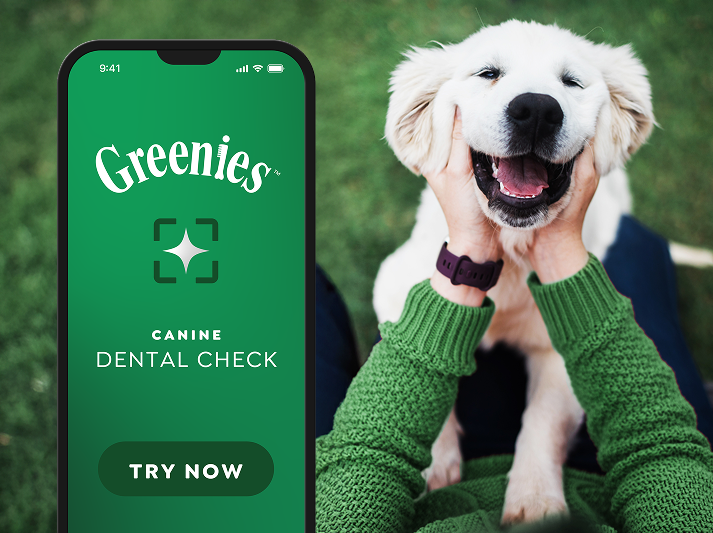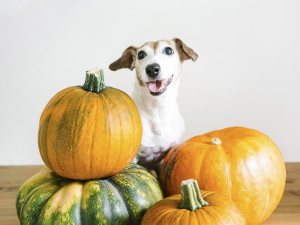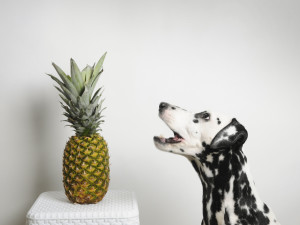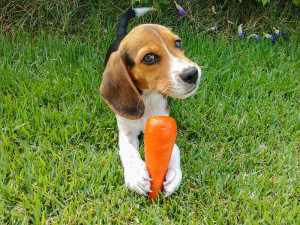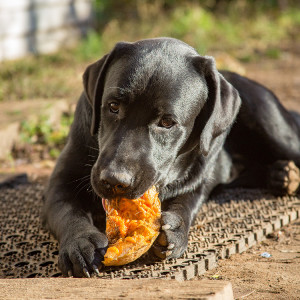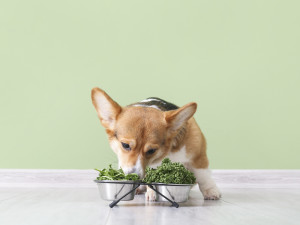What Should You Do if Your Dog Ate a Chicken Bone?
Everything you need to know so that your pup stays healthy and happy.
In This Article:
What to Do If Your Dog Ate a Chicken Bone What Is The Treatment Or Protocol That Vets Take When a Dog Eats a Chicken Bone? Risks That Can Occur When a Dog Eats a Chicken Bone How to Prevent Future Chicken Bone Eating Can Dogs Ever Eat Chicken Bones? Bottom Line
Dogs in the wild make the most of what they have, scavenging for food when necessary. So, it should be no wonder that your pup tries to take advantage of any human food that may come their way. And if a dog sees a tasty chicken bone? It’s no wonder they might try to eat it.
However, the dangers involved with eating chicken bones may cause you to worry if your pup has eaten one. Fortunately, we’re here for you with advice about what to do should your dog eat a chicken bone.
Snap a pic of your pup’s teeth, and GREENIES™ will help you spot potential signs of oral health issues.
What to do if your dog ate a chicken bone
Chicken bones can be dangerous for dogs to eat as their hollow nature leads to a higher likelihood of breaks and splinters when chewed; those sharp edges can potentially cause damage. However, a dog’s stomach acid is strong, and they produce a lot of it, so it’s possible for dogs to eat a chicken bone without an issue – but there is always a chance that an issue can arise.
How much do you spend on your pet per year?
If your dog eats something bad, such as a chicken bone, try feeding them a little bread and water. Soft food like bread may help cover the sharp edges of the bone and protect the digestive linings from a puncture. Consider a bland diet, such as boiled chicken (boneless of course!) and rice for a few days after to give the digestive system less to focus on while it dissolves the bone.
Do not induce vomiting or give your pup any medications unless instructed by your vet. Monitor your dog closely for additional signs of distress over the next few days.
When you should see a veterinarian
Don’t be afraid to contact your vet even if your dog is acting completely normal after eating a chicken bone. Many chicken bones are going to pass through your dog unnoticed, but that doesn’t mean you shouldn’t be hypervigilant about monitoring them. Watch for signs such as choking, hacking, gagging, vomiting, lethargy, not eating, and abdominal pain. Any of these signs could indicate a puncture or obstruction and you should see your veterinarian immediately.
What is the treatment or protocol that vets take when a dog eats a chicken bone?
Your vet will start with an examination that will include feeling their abdomen for signs of pain or discomfort. They may take X-rays to get a visual of the alleged bone and run some lab work to make sure everything is performing as it should.
Your dog may be started on fluids to help maintain hydration and proper bodily functions. They may be fed a special digestive diet that works the same way as a bland diet does to give your dog’s digestive tract a break while it works through the bone. Probiotics and other supportive measures may be necessary based on additional signs.
In some cases, the bone may need to be removed surgically. This is especially true in cases of a puncture or obstruction.
Risks that can occur when a dog eats a chicken bone
Dogs have been eating bones for centuries, so what’s the big deal? A nice smooth bone usually isn’t a big deal, but a sharp, broken bone can be. Here are some issues that can occur when a dog eats a chicken bone:
Perforation
This is a fancy word for puncture. Of course, it makes sense that something with sharp, pointy edges could puncture through the digestive walls. This allows bacteria that are better left inside the GI to invade the abdomen where they aren’t as welcome, causing a serious infection called peritonitis.
Choking
If your dog gets hold of a chicken bone, they’ll likely try to swallow it whole to get rid of the evidence as soon as possible. While this helps protect them from sharp edges, it can be a choking hazard. Larger objects can become lodged in the esophagus or upper airways, potentially becoming a medical emergency.
Obstruction
The intestines have muscular walls that move things down the line and allow a little room to stretch should they need to accommodate a larger bolus of ingesta. Even with this ability, the intestinal walls have their limits, meaning larger items, such as bones can become lodged in any one of the twists and turns. When the intestines can’t empty properly, it can lead to some serious consequences that need immediate veterinary attention.
Gastrointestinal issues
Eating a chicken bone can cause gastroenteritis, which usually includes vomiting, diarrhea, abdominal pain, not eating, and lethargy. A pup can be seriously uncomfortable and sick with this, so see a vet as soon as possible.
Bacterial contamination
Uncooked chicken is a major harborer of bacteria like Salmonella. You know to wash your hands after touching it, but your dog doesn’t know not to eat it. Uncooked chicken bones may harbor bacteria that could potentially make your dog sick.
How to prevent future chicken bone eating
The best way to keep your dog safe from eating chicken bones is to keep them out of reach. Sometimes this is easier said than done, but store chicken in areas that your dog can’t access and discard any bones in the trash that has a locking lid or is behind a cupboard door.
Can dogs ever eat chicken bones?
There are definitely differing opinions on raw feeding (including bones) and allowing dogs to chew bones. However, your best bet is to never feed your dog chicken bones, cooked or raw. While in most cases, your dog will likely be fine if they do, it’s just not worth the risk. Pork and beef bones, though not hollow and generally less breakable, aren’t safe either.
Bottom line
Dogs can digest bones in most cases, but there is the risk of choking, obstructions, perforations, and digestive upset when your dog eats a chicken bone. Never feed your dog chicken bones knowingly and, should they eat them anyway, monitor them closely for symptoms including choking, vomiting, abdominal pain, lethargy, and not eating. See your veterinarian immediately if they display any of these symptoms.
References
Barash, Nanelle R., et al. “Outcomes of Esophageal and Gastric Bone Foreign Bodies in Dogs.” Journal of Veterinary Internal Medicine, vol. 36, no. 2, 14 Feb. 2022, pp. 500–507, www.ncbi.nlm.nih.gov/pmc/articles/PMC8965252/, https://doi.org/10.1111/jvim.16383opens in new tab.
CDC. “About Pet Food Safety.” Healthy Pets, Healthy People, 2024, www.cdc.gov/healthy-pets/about/pet-food-safety.htmlopens in new tab.
Pomeroy, Ross. “Five Amazing Facts About the Dog Digestive System.” Real Clear Science. 25 Jun 2022. https://www.realclearscience.com/blog/2022/07/25/five_amazing_facts_about_the_dog_digestive_system_841331.htmlopens in new tab.

